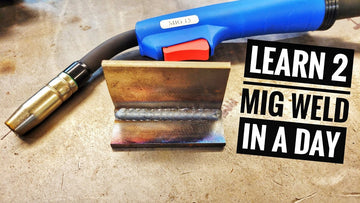
Introduction
Welcome to an in-depth tutorial on mastering the art of welding. Whether you're a novice welder or seeking to refine your skills, this guide will walk you through the essential steps, providing valuable tips to elevate your welding prowess.
Welding Tutorial: Seven Steps to Perfection
Step 1: Equipment Setup and Calibration
Achieving welding perfection begins with meticulous equipment setup. Optimize your welding gun machine based on the metal thickness, using a sacrificial piece for calibration. Take advantage of synergic mode, adjusting wire feed speed automatically, and consider adapting your machine with an accessory kit for versatile power sources.
Step 2: Safety Gear and Workspace Preparation
Prioritize safety with advanced gear, including Quick Change Auto Darkness welding shields and durable gloves. Choose appropriate clothing, like Wrangler shirts, and set up a well-ventilated workspace. For cleaning, utilize electric grinders or wire brushes, ensuring a hazard-free welding environment.
Step 3: Wire Selection and Gas Mixtures
Selecting the right wire and gas mixture is crucial for optimal welds. The recommended 0.030 wire and a shielded gas mixture of argon and carbon dioxide (75/25) provide a balance of penetration and bead quality.
Step 4: Pacing and Control Techniques
Perfecting your welding technique involves mastering pacing and control. Start by allowing the metal to melt and pool before advancing. Experiment with different gun motions, such as the straight drag or manipulated motions for enhanced bead flow. Understand the nuances of push and pull techniques, with considerations for penetration and overall weld quality.
Subtle Differences in Push-Pull Technique: The push-pull technique involves either pushing the gun away from the weld or pulling it towards the weld. Pushing is often preferred for better visibility, while pulling is known for deeper penetration. Experiment with both techniques to find what suits your style and project requirements.
Step 5: Comfortable Welding Posture
Maintain a stable and comfortable welding posture for precision. Widen your stance for increased stability, supporting your arm and wrist during the welding process. Find the optimal height and position to ensure maximum control over the welding gun.
MIG Gun Angles: Explore different angles, including the recommended 45-degree angle. This angle allows for effective penetration and bead formation. Experiment with variations, such as adjusting to a 15-degree angle, to observe changes in the weld seam and overall weld quality.
Step 6: Wire Clipping and Bead Assessment
Ensure a smooth welding process by correctly clipping the wire using the side cutters. Periodically assess your beads, evaluating factors such as width and uniformity. Use a wire brush to remove slag and oxidation, providing a clear view of the weld and facilitating adjustments.
Welding Speed and Seam Formation: Vary your welding speed to observe subtle differences in seam formation. Faster speeds may result in narrower beads, while slower speeds can lead to wider, more uniform seams. Experiment with different speeds on shorter runs to understand their impact on overall weld appearance.
Step 7: Heat Management and Practice
Exercise caution with heat management, avoiding excessive buildup during welding. Practice on shorter runs before progressing to longer ones, experimenting with different speeds and comparing results for continuous improvement.
Conclusion
Mastering welding involves a meticulous approach to equipment setup, safety, and technique. By following these seven steps and incorporating professional tips, you'll enhance your welding skills and achieve precision in every bead. Practice consistently, stay informed about advancements in welding technology, and soon you'll be welding with the confidence of a seasoned professional. Happy welding!
